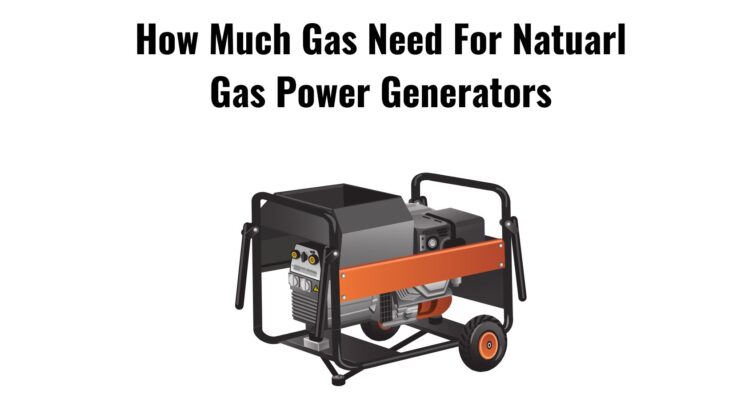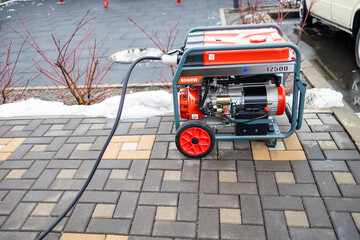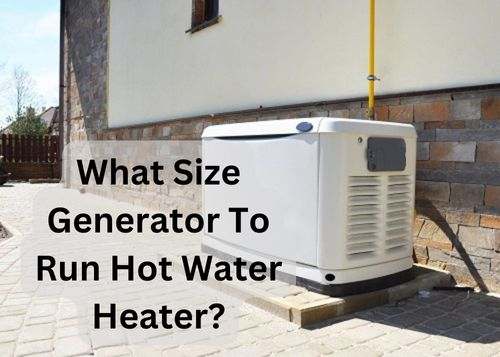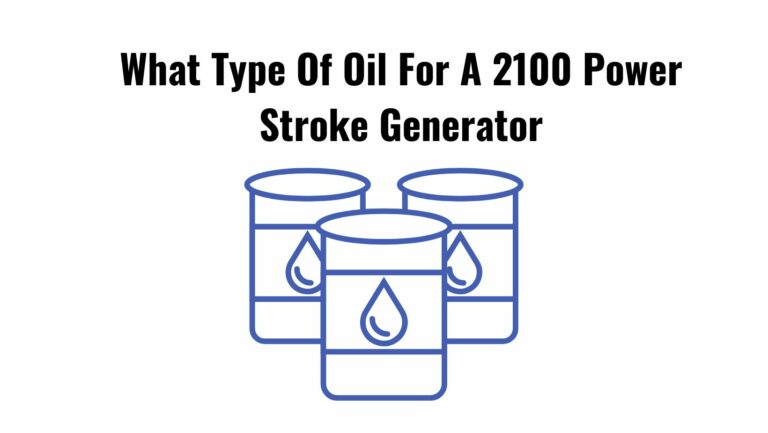
Are you curious about how much natural gas is needed to power a natural gas generator? Well, you’re not alone! Many people are interested in this topic because natural gas generators play an important role in providing reliable and efficient electricity.
You see, natural gas power generators work by converting the energy stored in natural gas into electricity. To do this, they need a constant supply of natural gas, so it’s important to know how much gas is required to keep the generator running smoothly.
Determining the exact amount of natural gas needed can be a bit complicated, but don’t worry, I’m here to help! In this article, we’ll discuss the various factors that affect the amount of natural gas required, provide a rough estimate of the gas consumption, and explore the importance of a detailed analysis.
How Natural Gas Power Generators Work

Have you ever wondered how natural gas is turned into electricity? It’s actually a pretty cool process! Natural gas power generators use a combination of combustion and turbines to generate electricity.
First, let’s talk about combustion. In simple terms, combustion is the process of burning fuel to release energy. In a natural gas power generator, the natural gas is burned in a combustion chamber to heat water and create steam.
Now, here’s where the turbines come in. The steam from the combustion chamber is funneled into a turbine, which is a type of engine that converts the energy from the steam into mechanical energy. The spinning turbine then drives a generator, which converts the mechanical energy into electrical energy. And voila! You now have electricity!
It’s important to note that the efficiency of the natural gas generator is largely dependent on the combustion process. The more efficiently the natural gas is burned, the more energy is released and the less waste is produced.
How Much Gas Is Need For Natural Gas Power Generators?
The amount of natural gas needed for a natural gas power generator depends on a variety of factors, including the size of the generator, its efficiency, and the operating conditions.
It’s difficult to provide an exact amount of natural gas needed for a natural gas power generator without considering all of these factors. However, as a rough estimate, a 100-megawatt generator may consume anywhere from 5,000 to 7,000 cubic meters of natural gas per hour.
Factors that Affect the Amount of Natural Gas Required
1. Size of the Generator
The size of the generator is an important factor because larger generators require more fuel to generate the same amount of electricity as a smaller generator. This is because larger generators have more components that need to be powered, and they require more energy to produce the same output as a smaller generator. For example, a 100-megawatt generator will consume more natural gas than a 50-megawatt generator.
2. The efficiency of the Generator
The efficiency of the generator refers to how much of the energy in the natural gas is being converted into usable electricity. The higher the efficiency of the generator, the less natural gas it will require to produce the same amount of electricity as a less efficient generator.
For example, if a generator has an efficiency rating of 50%, it will use twice as much natural gas as a generator with an efficiency rating of 25% to produce the same amount of electricity.
3. Capacity Factor
The capacity factor refers to how much of the generator’s potential output is actually being used. For example, if a generator has a capacity factor of 50%, it is only generating 50% of the electricity that it is capable of generating. If a generator is not being utilized to its full potential, it may consume more natural gas than necessary.
4. Operating Conditions
The operating conditions, such as temperature, pressure, and humidity, can also affect the amount of natural gas needed. For example, a generator operating in hot and humid conditions will require more fuel to maintain its efficiency than a generator operating in cooler, drier conditions because the former will have to work harder to maintain the same level of efficiency.
5. Fuel Quality and Heating Value
The quality and heating value of natural gas also plays a role in determining the amount of fuel needed. Higher-quality natural gas with a higher heating value will allow the generator to produce more electricity with less fuel than lower-quality natural gas with a lower heating value.
Rough Estimate of Natural Gas Consumption
First, it’s important to note that the exact amount of natural gas consumption will depend on a variety of factors, including the efficiency of the generator, the operating conditions, and the quality of the natural gas being used. However, we can use some rough estimates to get a general idea of what you can expect.
For a 100-megawatt generator, you can expect to consume approximately 5,000 to 7,000 cubic meters of natural gas per hour. This means that if you’re operating the generator at full capacity for 8 hours a day, you could expect to consume 40,000 to 56,000 cubic meters of natural gas in a single day.
It’s important to keep in mind that these estimates are just that – rough estimates. Your actual natural gas consumption will depend on your specific generator and operating conditions. However, by understanding these rough estimates, you can get a better idea of what you can expect in terms of natural gas consumption and costs.
Importance of a Detailed Analysis
It’s true, getting a rough estimate of natural gas consumption for a natural gas power generator is a great starting point, but it’s not the whole story. The actual amount of natural gas required can vary greatly based on the specific conditions and configuration of your generator.
That’s why it’s important to do a more detailed analysis of your generator’s natural gas consumption. By considering the specific generator and its operating conditions, as well as its efficiency, you can get a much more accurate picture of your energy usage and costs.
For example, if your generator is operating in an environment with high temperatures and high humidity, you may need to consume more natural gas to maintain the same level of performance as you would in a cooler, drier environment.
Similarly, if your generator is well-maintained and running at peak efficiency, you may be able to reduce your natural gas consumption compared to a generator that is in poor condition and operating inefficiently.
Wrapping Up
It’s clear that the amount of natural gas required for a natural gas power generator can vary greatly based on a number of factors, including the size of the generator, its efficiency, the capacity factor, and the operating conditions.
While it’s possible to get a rough estimate of natural gas consumption, it’s important to perform a more detailed analysis to determine the exact amount of natural gas required for your specific generator and operating conditions.
By considering the environmental impact and energy efficiency of your natural gas power generator, you can ensure that you’re using energy in the most responsible and cost-effective way possible.
Whether you’re operating a generator for personal use or for commercial purposes, taking the time to perform a detailed analysis and monitor your energy usage can help you keep your costs under control and minimize your environmental impact.






